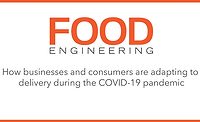COVID-19
Essential tips to communicating during COVID-19

It’s been just a few weeks since the nation shut down due to COVID-19 and it’s almost hard to remember what life was like before social distancing, essential business declarations and quarantining. As the world scrambles to establish a new normal, companies struggle to react to the daily changes that impact every aspect of their business.
Few industries have been as impacted as manufacturing, especially those in food and beverage. From disruptions to the supply chain to outbreaks in plants, manufacturers are racing to keep the nation fed while facing new challenges every day.
As specialists in crisis communications, my company, Red Shoes Inc., is brought in to work with leaders when the situation they’re facing is putting strain on their internal resources; from a capacity standpoint, an expertise standpoint – or both. During a crisis, we often hear from leaders who feel like they’re stuck in a never-ending cycle of putting out fires all day and never getting ahead of the game, much less operating strategically. When you’re operating in this mindset, chances are your communication efforts are suffering.
If COVID-19 has put your operations into a tailspin, here are tips to ensure your communications response is operating in a calm and effective manner.
Be prepared
It might seem odd to share this tip in the middle of a global pandemic, but we would be remiss if we didn’t state the obvious – preparing for a crisis is one of the best ways to ensure you’ll come out of it as quickly and as resilient as possible. As a manufacturer, you already have your crisis operations plans in place. Your employees know what to do if you have a materials spill or a power failure, but do you have a manual that outlines what to do if videos of your production lines leak online or reporters start calling your board?
Even if you don’t have a formal crisis communication plan in place today, it’s worth taking the time to make note of a few things:
- Your target audiences. Who do you need to be communicating with? Think of this internally to externally – from entry-level employees to the FDA, USDA or DHHA.
- Your contact lists and channels of communications. Once you have the target audiences identified, how will you communicate with them? Is there one administrative assistant who has access to all the email distributions lists? If he’s out on PTO, what do you do then? Make sure you have back-ups to the back-ups.
- Your likely scenarios. Global pandemic will probably be at the top of the list, but what other issues will this cause in the next months or even years? If your company was hit hard with an outbreak, you may have trouble recruiting employees because of your bad reputation for employee safety. Take some time to think worst-case scenarios and brainstorm all the things that could go wrong. A silver lining is that you may uncover issues that you can address today and stop from coming to fruition.
- Your resources. Now that you know what might happen, who you’ll have to communicate with and how you’ll reach them, you should identify who you will need to call on in a time of crisis. Your communications team is an obvious group, but also identify functions such as outside counsel, insurance brokers, risk and HR. You have the option to bring in outside resources to supplement your internal ones and it’s important to identify them now, even if you’re not ready to formally engage them.
Be proactive
This one is hard to achieve if it runs counter to your culture, but it’s essential for manufacturers to be proactive in their communications. Word travels fast and the grapevine transmits information regardless of seniority, job function, age, nationality or location. You want your target audiences – including your customers – to hear accurate information from you. Even if it’s bad news, you need to be upfront and honest, it will go a long way in ensuring your credibility as a trusted brand.
Be transparent
If you have a problem and you think you can make it go away by not addressing it – you’re mistaken. From employees to regulators, your stakeholders demand the truth from you and if you’re caught being less-than-honest, it will take massive amounts of work to gain back trust. Once you take the leap and commit to transparency across all levels of your organization, living up to that promise becomes second nature. People are more willing to forgive companies that own up to their issues and vow to fix them; they aren’t so loyal to those that intentionally mislead them.
Be available
Communication done the right way takes time. If you’re not wishing you could spend less time doing videos, media interviews or employee town halls, you’re not communicating enough. Being available also means committing your reputation. If you’re the person who is in charge of a department, a product or a company and used to sharing good news, you should be prepared to have your name connected with negative news. A crisis can make or break a leader; make sure you’re mentally prepared to step up and do the right thing, even if that means doing the hard thing.
Be humble
Eventually the crisis will pass and it will be time to take a deep breath, debrief on the issue and take stock of where you stand. You won’t be the same company after COVID-19 that you were before. This isn’t a time to point fingers, it’s a time to learn what went well and what needs improvement, and to adjust accordingly. Even if you grade your response an “A,” you still will have learned important lessons. Commit to an honest and deep look at your performance so you’re able to emerge from this crisis a better company than you were before it started.
We all realize that the response to COVID-19 is a marathon and not a sprint. If you view communications as a tool that can help you rather than something to be fearful of, you’ll be building a culture that will always benefit your company and not just be beneficial during a crisis.
Looking for a reprint of this article?
From high-res PDFs to custom plaques, order your copy today!







